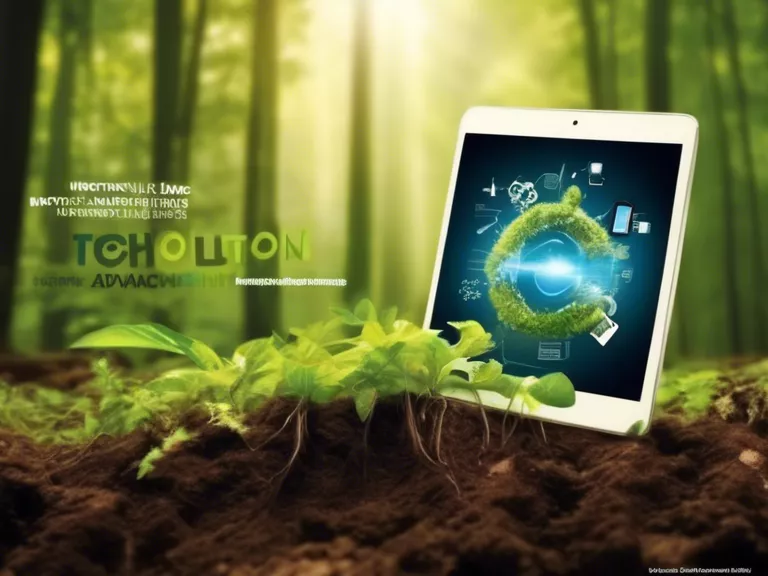
Introduction
In today's rapidly changing world, the intersection of sustainability and digital innovation is becoming increasingly crucial for ensuring environmental resilience. As we face unprecedented challenges such as climate change, biodiversity loss, and resource depletion, it is imperative to leverage technological advancements to drive sustainable solutions that can safeguard our planet for future generations.
The Role of Digital Innovation in Environmental Sustainability
Digital innovation encompasses a wide range of technologies and approaches that can be harnessed to address environmental issues. From data analytics and artificial intelligence to Internet of Things (IoT) devices and blockchain technology, there is a wealth of tools available to enhance our understanding of environmental challenges and develop innovative solutions.
Data Analytics and Artificial Intelligence
Data analytics and artificial intelligence (AI) play a key role in environmental sustainability by enabling us to analyze vast amounts of data to identify trends, patterns, and insights. By leveraging AI algorithms, we can optimize resource management, predict environmental risks, and streamline decision-making processes.
Internet of Things (IoT) Devices
IoT devices offer real-time monitoring and control capabilities that can revolutionize how we manage natural resources and infrastructure. By deploying sensors and connected devices, we can gather valuable data on environmental conditions, energy consumption, and waste generation to inform sustainable practices.
Blockchain Technology
Blockchain technology has the potential to transform sustainable supply chains by providing transparent and secure transactions. Through blockchain-based systems, we can track the origin and impact of products, verify sustainable practices, and incentivize eco-friendly behavior across industries.
Case Studies of Digital Innovation for Environmental Resilience
Smart Cities
Smart city initiatives leverage digital technologies to enhance urban sustainability and resilience. By integrating IoT sensors, data analytics, and AI systems, cities can optimize energy use, reduce emissions, and improve the quality of life for residents while minimizing environmental impact.
Precision Agriculture
Precision agriculture utilizes digital tools such as drones, satellite imagery, and IoT devices to optimize farming practices and minimize environmental harm. By precisely monitoring crop health, soil conditions, and water usage, farmers can reduce resource wastage and increase productivity sustainably.
Challenges and Opportunities
While digital innovation offers immense potential for environmental resilience, there are also challenges that need to be addressed. These include data privacy concerns, technological barriers, and the need for regulatory frameworks to ensure ethical and sustainable use of digital technologies.
Despite these challenges, the opportunities for leveraging digital innovation for environmental sustainability are vast. By fostering collaboration between technology developers, policymakers, and environmental experts, we can drive impactful solutions that promote a more sustainable future for all.
Conclusion
In conclusion, sustainable futures rely on harnessing the power of digital innovation to build environmental resilience. By embracing technologies such as data analytics, AI, IoT devices, and blockchain, we can create innovative solutions that protect our planet and safeguard its resources for generations to come. Through strategic partnerships and a commitment to sustainable practices, we can pave the way for a more sustainable and resilient future.

